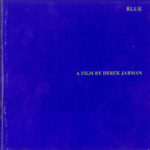Podcast: Play in new window | Download (Duration: 59:06 — 54.1MB)
Human hands unwittingly unleashed the AIDS epidemic and can now overcome it, if we learn the lessons of the past. This week on Interchange guest host Joan Hawkins welcomes James Kelly of IU’s Media School discuss the evolution of AIDS, from its origins in the equatorial forests of Cameroon to its outbreak in the 1980s to the efforts currently being made in Africa—with the participation of some IU students– to contain it.
GUEST
 James Kelly, Associate Professor of Journalism and Director of Undergraduate Studies in The Media School. His teaching areas include photojournalism, graphic communication and publication design, the mass media’s role in society, and the reporting of HIV/AIDS and healthcare. He is a Herbert Frederic Lieber Distinguished Teaching Professor. Last summer he took twelve Media School students to Kampala, Uganda where they reported on HIV/AIDS in Africa for the Daily Monitor newspaper.
James Kelly, Associate Professor of Journalism and Director of Undergraduate Studies in The Media School. His teaching areas include photojournalism, graphic communication and publication design, the mass media’s role in society, and the reporting of HIV/AIDS and healthcare. He is a Herbert Frederic Lieber Distinguished Teaching Professor. Last summer he took twelve Media School students to Kampala, Uganda where they reported on HIV/AIDS in Africa for the Daily Monitor newspaper.
RELATED
AMPATH – AMPATH is Moi University, Moi Teaching and Referral Hospital and a consortium of North American academic health centers led by Indiana University working in partnership with the Government of Kenya.
“Social Networks of Disease” – ‘Tinderbox,’ by Craig Timberg and Daniel Halperin (New York Times)
MAIN IMAGE
The HIV/AIDS epidemic remains a significant threat to Ugandans even after twenty years of success at first reversing the prevalence rate from one of the highest in the world to one of the more modest rates in Sub-Saharan Africa. Nineteen million of the world’s 33 million people with HIV today live in Africa. Billboards like this in Kyenjojo, Uganda, are sponsored by the US Agency for International Development as part of an ongoing public awareness campaign, and can be seen in almost every Ugandan village and town. Since 2010, 70 IU journalism students have spent part of their summers in East Africa with Professor Jim Kelly reporting on the epidemic and the people who are working to end AIDS.
MUSIC
 All of the music comes from English film director Derek Jarman’s 1993 film, Blue. Derek Jarman died on February 19th, 1994, 5 months after his film Blue was released. The film has been called a kind of epitaph and tombstone by film critic, Jonathan Rosenbaum. It was made when he was dying of AIDS and losing his eyesight, has only a single, continuous image consisting of the color blue, but the sound track is unusually dense, making use of four separate speaking voices, a multifaceted score, and numerous sound effects. Much of the narration consists of Jarman raging about his worsening physical condition and other facets of his daily life. Voices heard in the film are those of Jarman, John Quentin, Nigel Terry, and Tilda Swinton.
All of the music comes from English film director Derek Jarman’s 1993 film, Blue. Derek Jarman died on February 19th, 1994, 5 months after his film Blue was released. The film has been called a kind of epitaph and tombstone by film critic, Jonathan Rosenbaum. It was made when he was dying of AIDS and losing his eyesight, has only a single, continuous image consisting of the color blue, but the sound track is unusually dense, making use of four separate speaking voices, a multifaceted score, and numerous sound effects. Much of the narration consists of Jarman raging about his worsening physical condition and other facets of his daily life. Voices heard in the film are those of Jarman, John Quentin, Nigel Terry, and Tilda Swinton.
 CREDITS
CREDITS
Guest Host: Joan Hawkins
Producer: Doug Storm
Assistant Producer: Rob Schoon
Studio Engineer: Jennifer Brooks
Executive Producer: Wes Martin
 WFHB Bloomington Community Radio
WFHB Bloomington Community Radio


